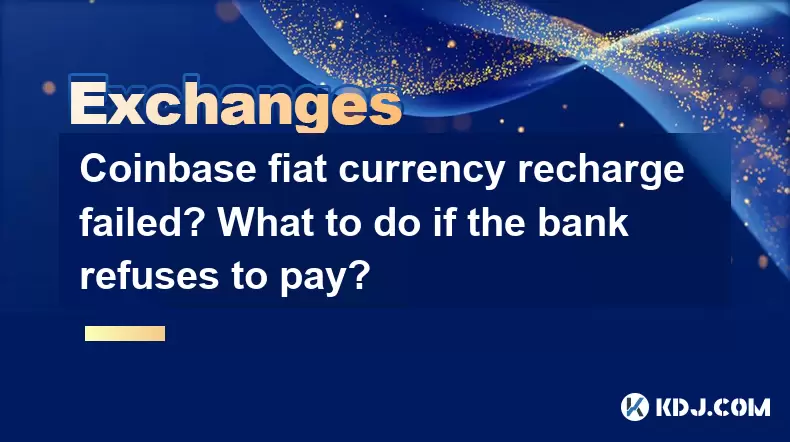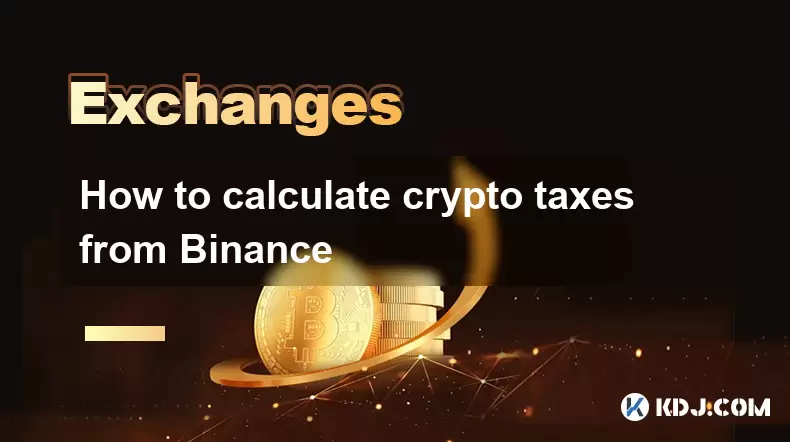-
 Bitcoin
Bitcoin $117500
2.15% -
 Ethereum
Ethereum $3911
6.19% -
 XRP
XRP $3.316
10.79% -
 Tether USDt
Tether USDt $1.000
0.01% -
 BNB
BNB $787.2
2.24% -
 Solana
Solana $175.2
4.15% -
 USDC
USDC $0.9999
0.00% -
 Dogecoin
Dogecoin $0.2225
8.40% -
 TRON
TRON $0.3383
0.28% -
 Cardano
Cardano $0.7868
6.02% -
 Stellar
Stellar $0.4382
9.34% -
 Hyperliquid
Hyperliquid $40.92
7.56% -
 Sui
Sui $3.764
7.63% -
 Chainlink
Chainlink $18.48
10.66% -
 Bitcoin Cash
Bitcoin Cash $582.1
1.88% -
 Hedera
Hedera $0.2601
6.30% -
 Avalanche
Avalanche $23.33
4.94% -
 Ethena USDe
Ethena USDe $1.001
0.02% -
 Litecoin
Litecoin $122.3
2.04% -
 UNUS SED LEO
UNUS SED LEO $8.969
-0.27% -
 Toncoin
Toncoin $3.339
0.86% -
 Shiba Inu
Shiba Inu $0.00001287
4.30% -
 Uniswap
Uniswap $10.43
7.38% -
 Polkadot
Polkadot $3.861
5.08% -
 Dai
Dai $1.000
0.02% -
 Bitget Token
Bitget Token $4.513
3.41% -
 Monero
Monero $267.7
-6.18% -
 Cronos
Cronos $0.1499
4.14% -
 Pepe
Pepe $0.00001110
5.15% -
 Aave
Aave $284.9
8.28%
Coinbase fiat currency recharge failed? What to do if the bank refuses to pay?
When banks refuse to pay for Coinbase recharges, it's often due to fraud suspicions, insufficient funds, or limits; contact your bank and verify your Coinbase account to resolve issues.
May 16, 2025 at 09:15 pm

When using Coinbase to recharge your account with fiat currency, it's not uncommon to encounter issues where the bank refuses to pay. This can be frustrating and confusing, especially if you're not sure what steps to take next. In this article, we'll explore the reasons behind bank refusals and provide a detailed guide on what you can do to resolve the issue and successfully recharge your Coinbase account.
Understanding Why Banks Refuse to Pay
Banks may refuse to pay for several reasons when you attempt to recharge your Coinbase account. Common issues include:
- Suspicion of Fraud: Banks have strict anti-fraud measures in place. If a transaction appears unusual or suspicious, the bank may block it to protect you from potential fraud.
- Insufficient Funds: If your account does not have enough funds to cover the transaction, the bank will refuse to process it.
- Account Restrictions: Sometimes, banks place restrictions on accounts due to various reasons, such as account verification issues or regulatory compliance.
- Transaction Limits: Banks often impose daily or monthly transaction limits, and if your recharge exceeds these limits, it will be declined.
Understanding these reasons can help you identify why your bank might be refusing to pay and take the appropriate steps to resolve the issue.
Contacting Your Bank
The first step to resolving a refused payment is to contact your bank. Here’s a detailed guide on how to do this:
- Gather Information: Before calling, make sure you have all relevant details at hand, such as the transaction ID, the amount you tried to recharge, and the date and time of the transaction.
- Call the Bank: Use the customer service number on the back of your card or the bank’s official website to reach their support team.
- Explain the Issue: Clearly explain that you attempted to recharge your Coinbase account but the transaction was refused. Provide the transaction details and ask why the payment was declined.
- Request a Resolution: Ask the bank representative to resolve the issue. If it’s due to fraud concerns, they may need to verify your identity or the transaction. If it’s due to insufficient funds or limits, discuss how you can adjust these to complete the transaction.
Verifying Your Coinbase Account
Ensuring your Coinbase account is fully verified can also help resolve payment issues. Here’s how to check and complete your verification:
- Log into Coinbase: Access your Coinbase account on their website or app.
- Go to Settings: Navigate to the settings or profile section of your account.
- Verify Identity: Follow the prompts to upload the necessary identification documents, such as a driver’s license or passport. Make sure the documents are clear and meet Coinbase’s requirements.
- Wait for Approval: After submitting your documents, wait for Coinbase to review and approve your verification. This can take a few days.
A fully verified account can reduce the likelihood of banks refusing payments due to concerns about the legitimacy of the transaction.
Using Alternative Payment Methods
If your bank continues to refuse payments, you might consider using alternative payment methods to recharge your Coinbase account. Here are some options:
- Debit/Credit Cards: If you initially used a bank transfer, try using a debit or credit card instead. Ensure the card is linked to an account with sufficient funds.
- Cryptocurrency Transfers: If you have cryptocurrency in another wallet, you can transfer it to your Coinbase account and then convert it to fiat currency.
- Third-Party Payment Services: Services like PayPal or Skrill might offer more flexibility in processing payments to Coinbase.
Each of these methods has its own set of steps and potential issues, so make sure to follow Coinbase’s guidelines carefully.
Escalating the Issue with Coinbase Support
If you’ve tried the above steps and still face issues, it may be time to reach out to Coinbase support. Here’s how to escalate your issue:
- Access Support: Go to the Coinbase website and navigate to the support section.
- Submit a Ticket: Use the support form to submit a detailed ticket about your issue. Include all relevant information, such as transaction IDs, dates, and the steps you’ve already taken.
- Follow Up: After submitting your ticket, keep an eye on your email for responses from Coinbase support. Be prepared to provide additional information if requested.
Coinbase support can often provide insights or solutions that you might not have considered, helping you resolve the payment issue more effectively.
Checking for Bank-Specific Issues
Sometimes, the issue might be specific to your bank. Here’s how to check for and address bank-specific issues:
- Research Online: Look for forums or online communities where other users might have reported similar issues with the same bank. This can give you insights into whether the problem is widespread.
- Contact Bank’s Online Support: Some banks offer online chat support or social media channels where you can quickly get answers to your questions.
- Visit a Branch: If the issue persists, consider visiting a local branch of your bank. Speaking to a representative in person can sometimes resolve issues more effectively than over the phone or online.
Understanding if the issue is specific to your bank can help you tailor your approach to resolving the payment refusal.
Frequently Asked Questions
Q: Can I use a different bank account to recharge my Coinbase account if my primary bank refuses to pay?
A: Yes, you can try using a different bank account. Ensure the new account is fully verified and has sufficient funds. Follow the same steps as outlined above to recharge your Coinbase account.
Q: How long does it typically take for Coinbase to verify my identity?
A: The verification process can take anywhere from a few hours to several days, depending on the volume of requests Coinbase is processing. Make sure your documents are clear and meet their requirements to expedite the process.
Q: Are there any fees associated with using alternative payment methods on Coinbase?
A: Yes, Coinbase may charge fees for using certain payment methods. These fees vary depending on the method and the amount you’re recharging. Always check Coinbase’s fee schedule before proceeding with a transaction.
Q: What should I do if Coinbase support does not respond to my ticket?
A: If you don’t receive a response within a reasonable timeframe, you can try resubmitting your ticket with additional details or reaching out through Coinbase’s social media channels for faster assistance.
Disclaimer:info@kdj.com
The information provided is not trading advice. kdj.com does not assume any responsibility for any investments made based on the information provided in this article. Cryptocurrencies are highly volatile and it is highly recommended that you invest with caution after thorough research!
If you believe that the content used on this website infringes your copyright, please contact us immediately (info@kdj.com) and we will delete it promptly.
- Tron's Sell-Off Spurs Altcoin Shift: What's Next for TRX?
- 2025-08-08 08:30:12
- RUVI Presale: Is the Growth Potential Real?
- 2025-08-08 09:10:12
- Sleep Token's US Takeover: Thornhill Rides the 'Even In Arcadia' Wave
- 2025-08-08 08:30:12
- FTT Token's Wild Ride: Creditor Repayments vs. Market Drop - A New Yorker's Take
- 2025-08-08 07:10:12
- Floki Crypto Price Prediction: Riding the Robinhood Rocket or Just a Meme?
- 2025-08-08 07:15:12
- EigenLayer, Restaking, and Ethereum: Navigating the Hype and the Hazards
- 2025-08-08 06:30:12
Related knowledge

How to use margin trading on Poloniex
Aug 08,2025 at 09:50am
Understanding Margin Trading on Poloniex

How to use advanced trading on Gemini
Aug 08,2025 at 04:07am
Understanding Advanced Trading on GeminiAdvanced trading on Gemini refers to a suite of tools and order types designed for experienced traders who wan...

How to deposit USD on Bitstamp
Aug 07,2025 at 05:18pm
Understanding Bitstamp and USD DepositsBitstamp is one of the longest-standing cryptocurrency exchanges in the industry, offering users the ability to...

How to use the Kraken Pro interface
Aug 08,2025 at 09:57am
Understanding the Kraken Pro Interface LayoutThe Kraken Pro interface is designed for both novice and experienced traders seeking a streamlined experi...

How to find my transaction ID on Gemini
Aug 08,2025 at 12:50am
Understanding the Transaction ID in Cryptocurrency ExchangesA transaction ID (TXID) is a unique alphanumeric string that identifies a specific transfe...

How to calculate crypto taxes from Binance
Aug 08,2025 at 07:56am
Understanding Cryptocurrency Taxation on BinanceCalculating crypto taxes from Binance requires a clear understanding of how tax authorities classify d...

How to use margin trading on Poloniex
Aug 08,2025 at 09:50am
Understanding Margin Trading on Poloniex

How to use advanced trading on Gemini
Aug 08,2025 at 04:07am
Understanding Advanced Trading on GeminiAdvanced trading on Gemini refers to a suite of tools and order types designed for experienced traders who wan...

How to deposit USD on Bitstamp
Aug 07,2025 at 05:18pm
Understanding Bitstamp and USD DepositsBitstamp is one of the longest-standing cryptocurrency exchanges in the industry, offering users the ability to...

How to use the Kraken Pro interface
Aug 08,2025 at 09:57am
Understanding the Kraken Pro Interface LayoutThe Kraken Pro interface is designed for both novice and experienced traders seeking a streamlined experi...

How to find my transaction ID on Gemini
Aug 08,2025 at 12:50am
Understanding the Transaction ID in Cryptocurrency ExchangesA transaction ID (TXID) is a unique alphanumeric string that identifies a specific transfe...

How to calculate crypto taxes from Binance
Aug 08,2025 at 07:56am
Understanding Cryptocurrency Taxation on BinanceCalculating crypto taxes from Binance requires a clear understanding of how tax authorities classify d...
See all articles

























































































